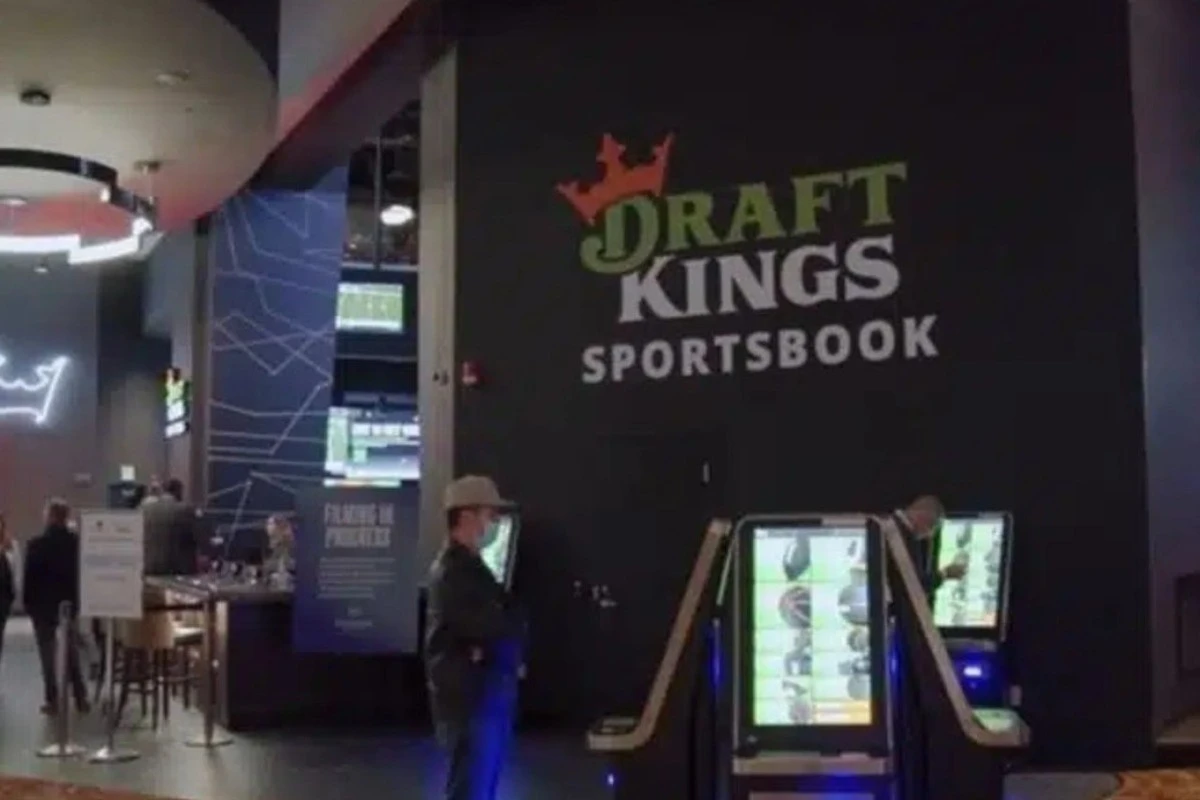DraftKings treads water in Q1 but pricing questions persist as favourites’ bug bites books

Despite contending with a series of unfavourable sports outcomes for the second consecutive quarter, DraftKings managed to generate a 20% revenue increase in the opening quarter of the year, an outcome the company ascribed to its core value drivers.
Historic trends during March Madness hijacked earnings on the quarter, as top seeds covered at an unprecedented rate throughout the month-long college basketball tournament. Across the event, higher seeds won at an 82% rate, according to DraftKings, which described it as the highest rate in the history of the NCAA Division I men’s basketball tournament. For 2025 year-to-date, the headwinds from the negative sporting outcome have provided a negative impact of $170 million to revenue and $111 million to adjusted EBITDA.
DraftKings’ crack staff of quantitative modelling experts studied the trends assiduously over the quarter, pouring over a slew of historical data across multiple bet types. As with its main competitors, DraftKings dealt with the headwinds at the tail end of the NFL regular season when favourites covered at a high clip. Top sportsbooks also took a hit in last year’s NCAA tournament when higher seeds prevailed at a rate of 69%.
“Our analyses provide us strong confidence that the recent volatility we’ve experienced is random in nature,” said DraftKings CEO Jason Robins on Friday’s first quarter earnings call.
The convergence between structural and actual hold
The NCAA did not hold March Madness in 2020 due to the Covid-19 pandemic. In the five years since, the win percentage by a higher-seeded team has eclipsed 66% in each year.
Prior to the pandemic, higher seeds advanced at a rate of 68% and 69% in 2018 and 2019, respectively, according to DraftKings’ figures.
Within the first 10 seconds of Friday’s call, Robins addressed trends of negative sports outcomes. Predictably, he fielded a query on the topic during the first question of a session with analysts.
One theory Robins discussed surrounds the impact of Name, Image and Likeness (NIL) deals on the college landscape.
Two years ago, favourable sport outcomes in the first quarter contributed approximately $20 million to the company’s revenue improvement, DraftKings noted at the time. That year, a pair of mid-majors, San Diego State and Florida Atlantic, advanced to the Final Four.
But as NIL deals become more lucrative, star players such as Cooper Flagg and Walter Clayton Jr have flocked to powerhouse programmes in the nation’s largest conferences. Flagg, the Naismith Player of the Year, inked an endorsement deal with New Balance despite Duke’s longtime partnership with Nike.
If the theory holds true, March Madness could experience fundamental changes in rates of favouritism. But Robins believes that it would not change the fact that customers may still gravitate to favourites, a historical trend across the industry.
DraftKings exceeded company expectations with a structural hold of 10.4%, coupled with an actual hold of 9.5%. If the NIL trends prevail, DraftKings can respond by optimising its lines slightly, according to Robins.
“If that occurs, the model will pick it up” and the two will “converge”, Robins explained.
One potential solution centers around the utilisation of AI for DraftKings’ pricing and risk-mitigation strategies. In a letter to shareholders, Robins emphasised that DraftKings is embracing an “AI-first” mindset to unlock greater speed, efficiency and scale across the business. As it relates to risk management, Robins is intrigued by the opportunity AI presents moving forward.
Robins has been pleased with metrics related to in-game betting in the wake of acquisition of micro-betting platform Simplebet, as well as SportsIQ and Mustard Golf. For the first time, he has noticed a material impact from the offerings on customer activity. In baseball, live betting represents about 36% of DraftKings’ overall volume, Robins noted. For microbets, DraftKings does not want its hold to be too high, but can increase levels for other markets such as second-half outcomes, he added.
Mixed bag of results for DraftKings
For the three-month period ended 31 March, DraftKings generated revenue of $1.41 billion, slightly missing analysts’ consensus estimate of $1.45 billion. The company reported adjusted EBITDA of $102.6 million, topping forecasts of $98.9 million. DraftKings also reported earnings per share of $0.12, in line with forecasts from analysts.
In light of the headwinds, DraftKings revised its fiscal year 2025 revenue guidance midpoint to $6.3 billion. The company now expects revenue of $6.2 billion to $6.4 billion, compared to its prior range of $6.3 billion to $6.6 billion, said CFO Alan Ellingson.
DraftKings also anticipates adjusted EBITDA of $800 million to $900 million, compared to previous guidance in the range of $900 million to $1 billion. The company projects structural hold to fall under 11% for the third quarter, but to come in a smidge higher in the final quarter of 2025.
DraftKings is not the only major operator that experienced the ill effects of the trends from March Madness. Virtually every top sportsbook has discussed the headwinds during earnings season.
Still, the patterns could raise questions about DraftKings’ pricing mechanisms and algorithmic capabilities after the recurring issue. While one-off exogenous events can be brushed aside, the issue can become disconcerting if it persists several years from now, a prominent Wall Street analyst told iGB of the pricing trends for favourites.
Other highlights from DraftKings’ Q1 earnings report
- DraftKings’ metric known as “monthly unique payers” increased to 4.3 million average monthly unique paying customers, representing an increase of 28% from the same period in 2024. The increase reflects strong unique payer retention and acquisition across DraftKings’ sportsbook and iGaming offerings, the company disclosed.
- Another metric with the abbreviation “ARPMUPS” came in at $108, representing a decrease of 5% compared to the first quarter of 2024. The abbreviation stands for “average revenue per monthly unique player”. Excluding the impact of the company’s acquisition of Jackpocket, ARPMUPs increased approximately 7% compared to the first quarter of 2024, DraftKings noted.
- Speaking briefly about recent trends involving prediction markets, Robins indicated that DraftKings is monitoring the trends among the companies, including recent court cases. Robins plans to keep an eye on commentary from state regulatory bodies and tribal gaming entities as the topic intensifies. He is particularly interested in the trends in markets that do not offer legalised sports betting at the moment.
- Robins indicated that he believes DraftKings is well positioned for the evolving macroeconomic environment. In mature markets, online gaming experienced resiliency during the global financial crisis, he added. A threat of a prolonged global trade war and an entrenched recession has served as a popular topic on quarterly earnings calls.
- In February, Jackpocket stopped operating in Texas after the state’s lottery commission banned courier lottery services. Jackpocket subsequently departed from the New Mexico market in the following month. While Robins is cautiously optimistic that Jackpocket will turn a profit this year, he indicated that it could break even largely due to the Texas departure. The company is working toward integrating Jackpocket into the DraftKings app before the end of the year.
In evaluating its core value drivers, DraftKings emphasised that the metrics outperformed the company’s expectations. DraftKings pointed to product enhancements that are driving higher structural sportsbook hold percentage and the company’s efficiency with deployment of promotions. Speaking of promos, DraftKings noted that promotional reinvestment became more efficient year-over-year as a percentage of gross gaming revenue.
For the quarter, DraftKings’ handle increased 16% year-over-year to $13.9 billion. For vintage states that offered sports betting before 2024, handle jumped 11% from the prior year’s quarter, DraftKings said.
Stock moves
In the weeks leading to Friday’s earnings call, DraftKings experienced a slew of downgrades from Wall Street analysts. One prominent institutional investor, BlackRock Inc, also trimmed its holdings on the period. As of 31 March, BlackRock held 23,120,591 shares in DraftKings, a reduction of 8,072,754 from its previous position. The reduction represents a 25.9% decrease in the firm’s holdings in DraftKings.
As of Friday, about 80.2% of DraftKings’ shares were held by institutional groups, according to Yahoo Finance.

After releasing quarterly financial results on Thursday after the bell, DraftKings traded at $35.35 a share in the after-hours session, up nearly 2%. DraftKings ticked up to $36 in Friday’s pre-market session.
On Friday morning, DraftKings reached a high of $37.60 a share, before falling to $36.50 at 11.30am ET.
